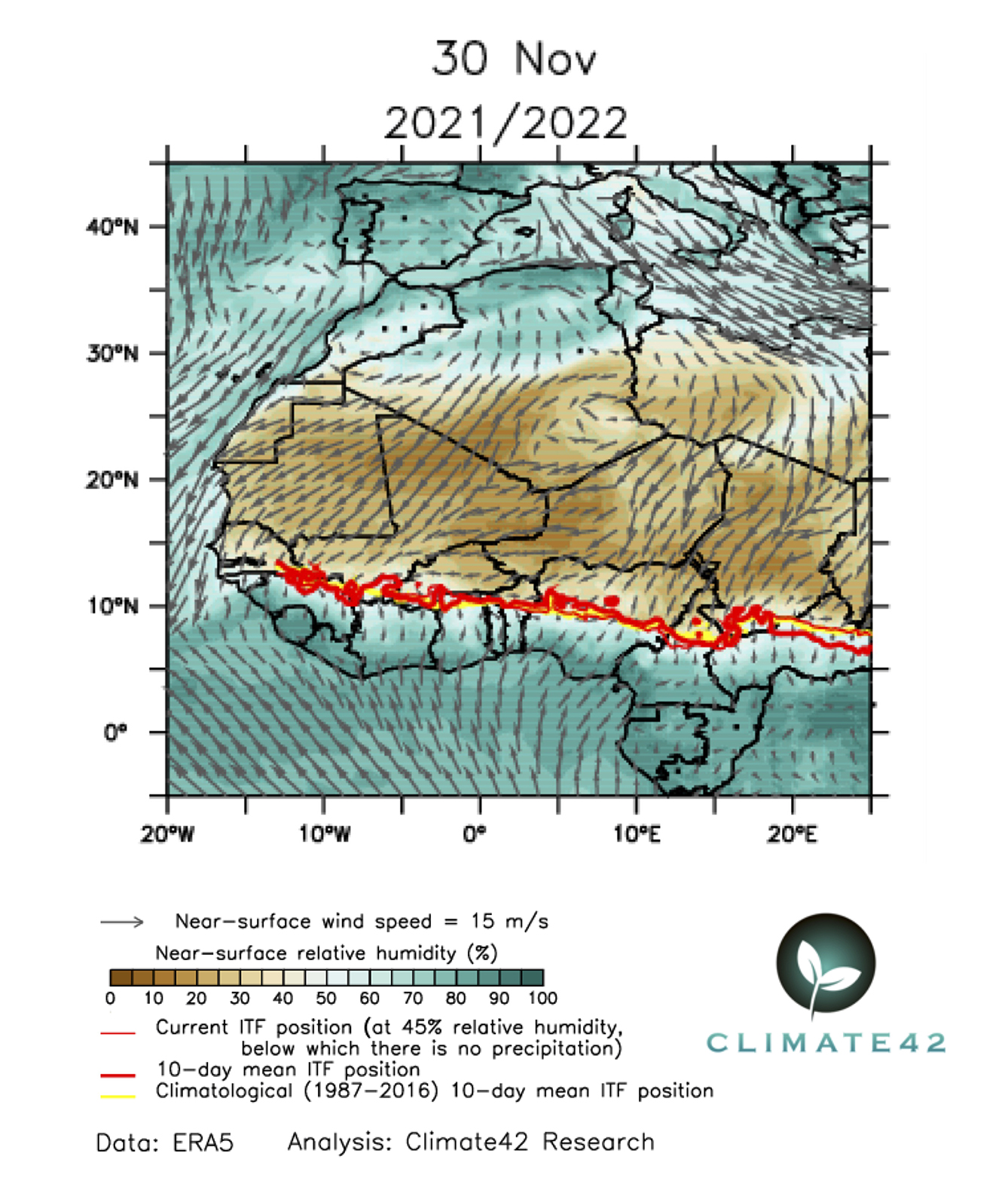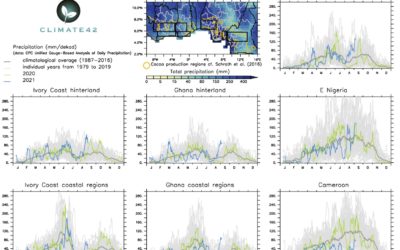December 10, 2021

The ITF has been lagging slightly behind its normal position throughout most of the past month, only catching up to it in late November. By the end of the month, the ITF was located right along its average position for this time of the year: near the northern borders of Ivory Coast and Ghana, almost, but not quite, mid-way through Nigeria and around 8°N in Cameroon – far enough from the cocoa regions not to pose any threat to the cocoa trees.
Even if, in line with our predictions, the crops are safe from the negative consequences of the harmattan for the time being, and December should not pose a significant threat either, the mid-crop could still suffer some losses from the harmattan later in the season.
With the current hydric resilience of the trees, in the Ivorian hinterland, wilting of part of the mid-crop may be expected from late December onward with each harmattan event. In eastern coastal Ghana and southern Cameroon, trees will be able to cope with harmattan episodes up to late January without consequences but their mid-crop would suffer greatly from later occurrences of the harmattan. In the rest of West Africa, the mid-crop potential should not be reduced by the long dry season as long as the harmattan conditions are not harsher than average.
Read More
Related Posts
Precipitation Monitoring
In line with predictions, September has so far brought well above-average precipitations in Ghana, SW Nigeria and Ivory Coast, where rains had already resumed mid-August. With precipitations between 130 and 300 mm over the past 30 days, most of these cocoa regions...
Hydric Resilience Monitoring
A very wet end of August helped rebuild this resilience throughout the cocoa belt, where most regions currently enjoy at least 1 month's worth of resilience. Most areas will see no negative effects even in the unlikely scenario where precipitations are 20%...


